The Bearer of Bad News…
Most of my job as a horticulturist and garden writer is fun.
But sometimes, I have to be the bearer of bad news.
Last week, I was called to a home where the homeowners were worried about one of their citrus trees. Although I am a horticulturist, I am also a Certified Arborist, which can also be very helpful – especially when I am dealing with trees.
There was a large lemon tree in their front garden. They were concerned because they had some branches dying back and wanted to know what the cause was.
So, I stopped by and took a look at the lemon tree. At first glance, it looked fine – the homeowner had had the dead branches removed.
But, I had to look more closely, which meant getting close to the interior branches and the trunk.
What I saw in one of the remaining branches wasn’t good…
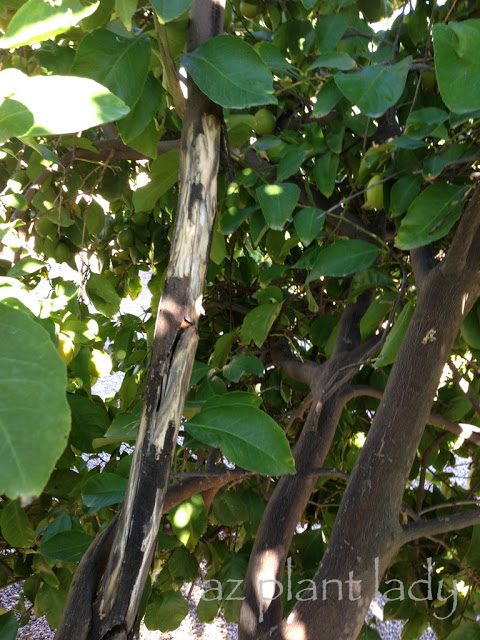
Can you see that the branch on the left is missing bark and is colored black?
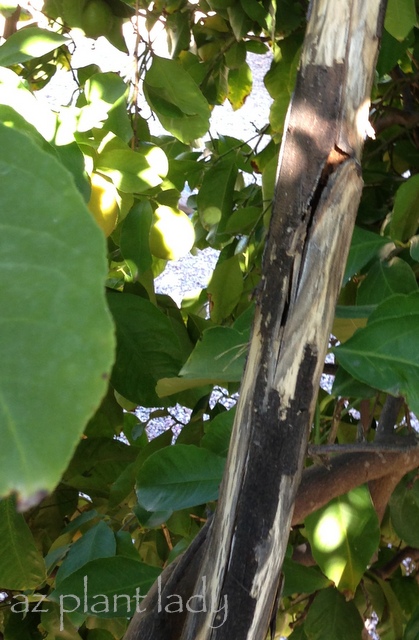
What is this you may wonder?
Sooty Canker.
Sooty Canker is a fungal disease that infects many different species of trees including citrus. It spreads through fungal spores. The spores enter the tree through damaged areas on the branches or trunk, forming lesions and eventually causing the bark to peel off.
It is called ‘sooty canker’ because of the black color of the fungal spores. The branches almost looked as if they have been scorched by fire.
In this case, the lemon tree had experienced severe frost damage 1 1/2 years ago. Frost can cause splitting and other damage in the bark. Sunburn damage can cause similar problems as well. The fungal spores enter through these damaged areas and begin to grow.
If only branches are affected, they can be pruned 6 inches to 1 ft. below where you see evidence of the sooty canker. Pruning tools must be disinfected with a 20% bleach solution to keep the disease from spreading between each pruning cut.
I was hopeful that I could tell the homeowners that all they had to do was to prune the affected branches.
But that was before I looked down at the trunk…
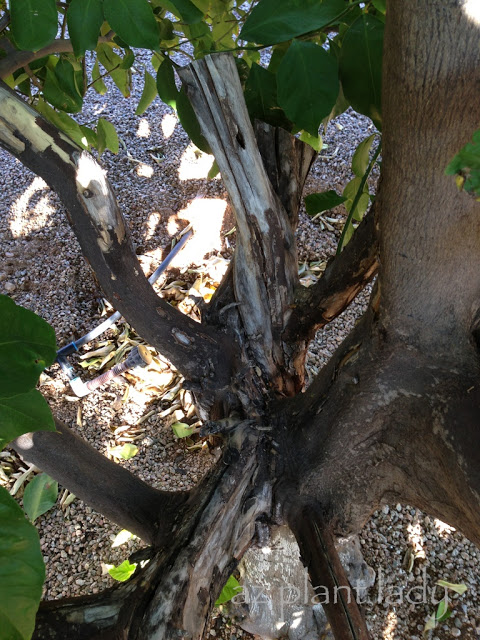
The entire trunk was infected with sooty canker. Unfortunately, this almost certainly means that the tree will die.
In this case, the tree should be removed to avoid spreading it to other trees.
I hated to tell the homeowners that they would have to have their tree taken out. Especially after they told me how much fruit they had enjoyed over the years from this tree.
After I told them the fatal diagnosis of their lemon tree – I offered to look at their other four citrus trees. I wanted to make sure that they weren’t infected as well.
Well, the good news was that their Meyer lemon tree was healthy.
The bad news was that their two orange trees and pommelo tree were all badly infected with sooty canker.
Did I mention that I hate being the bearer of bad news?
I must say that the clients accepted the bad news very well.
In fact, they said that they had gotten tired of picking up dropped fruit AND that one of them couldn’t even eat citrus any more due to dietary constraints.
They will be removing their five infected citrus trees while keeping a close eye on their disease-free Meyer lemon tree. At the first sign of a lesion, they will prune it away to help keep it safe from infection.
Guess what?
They asked me to return in spring to design a new landscape area in place of their citrus trees. I like being with people who see things as “a glass half-full”.
*************************
If you suspect that your tree has sooty canker – have a professional confirm the diagnosis and discuss with you the treatment options. If the trunk is not affected, you may be able to save your tree.
For more information, check out this link.

 Noelle Johnson, aka, 'AZ Plant Lady' is a author, horticulturist, and landscape consultant who helps people learn how to create, grow, and maintain beautiful desert gardens that thrive in a hot, dry climate. She does this through her consulting services, her online class Desert Gardening 101, and her monthly membership club, Through the Garden Gate. As she likes to tell desert-dwellers, "Gardening in the desert isn't hard, but it is different."
Noelle Johnson, aka, 'AZ Plant Lady' is a author, horticulturist, and landscape consultant who helps people learn how to create, grow, and maintain beautiful desert gardens that thrive in a hot, dry climate. She does this through her consulting services, her online class Desert Gardening 101, and her monthly membership club, Through the Garden Gate. As she likes to tell desert-dwellers, "Gardening in the desert isn't hard, but it is different."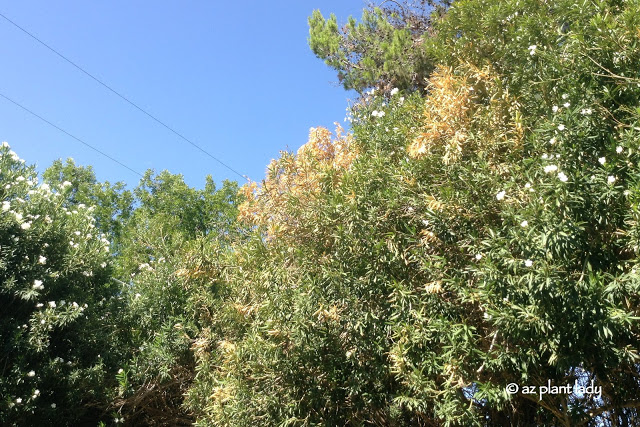
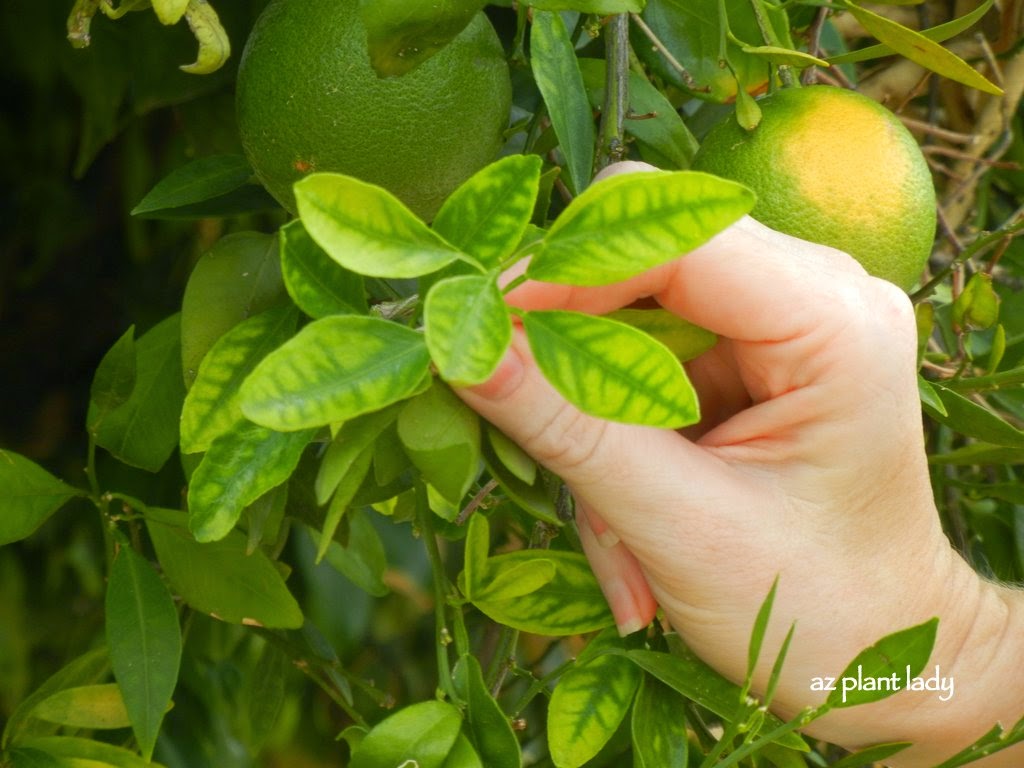
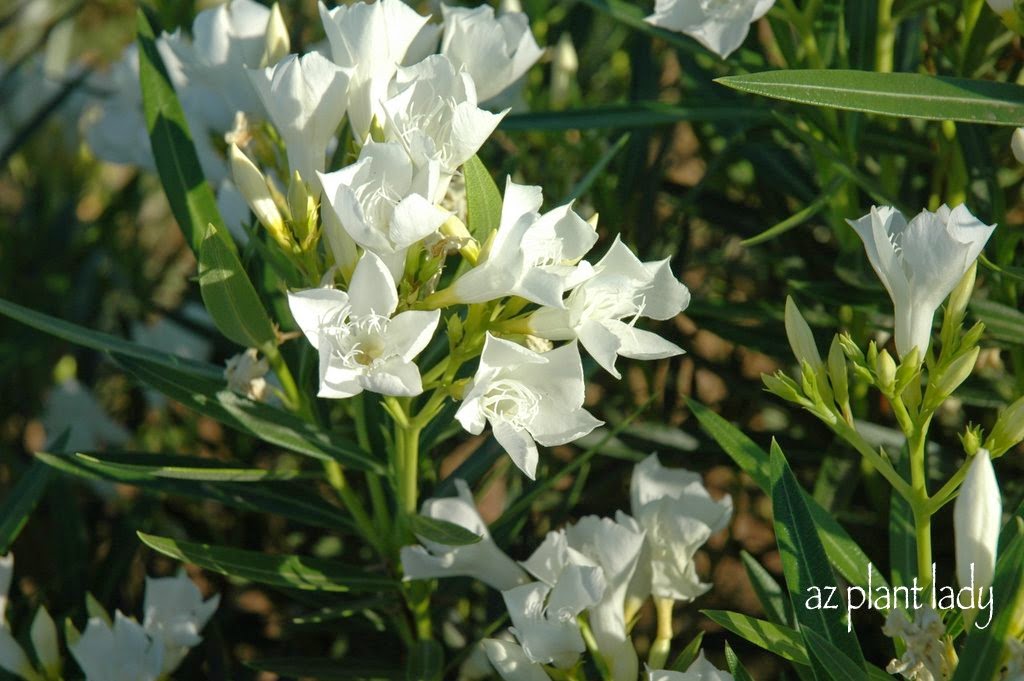
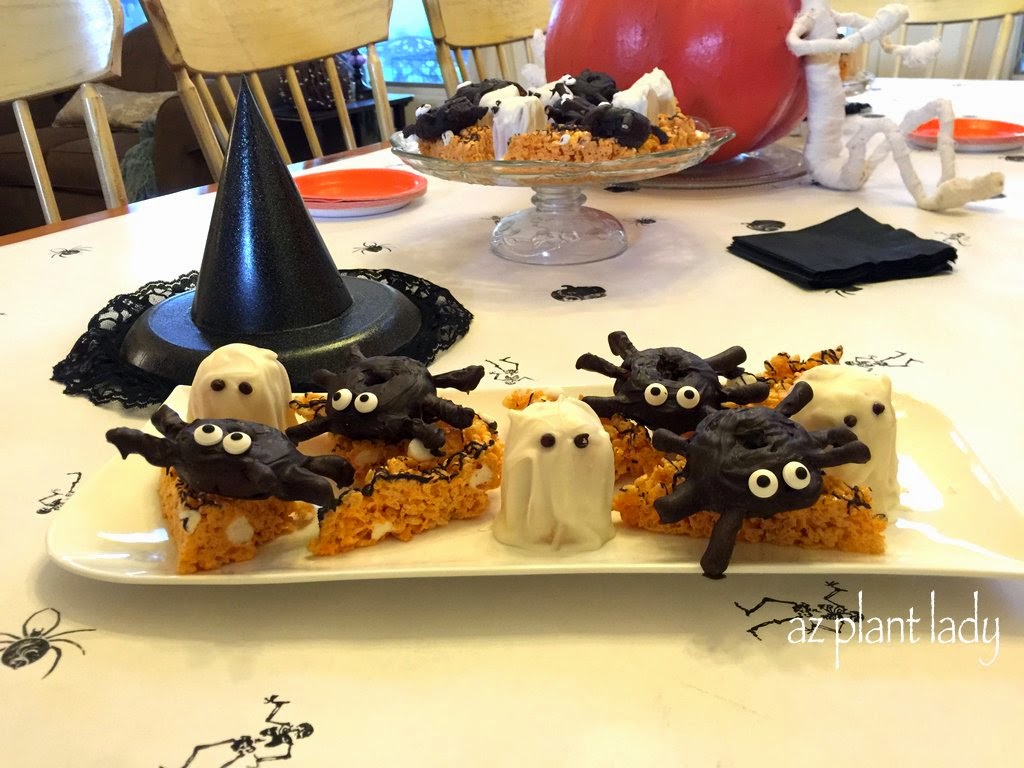
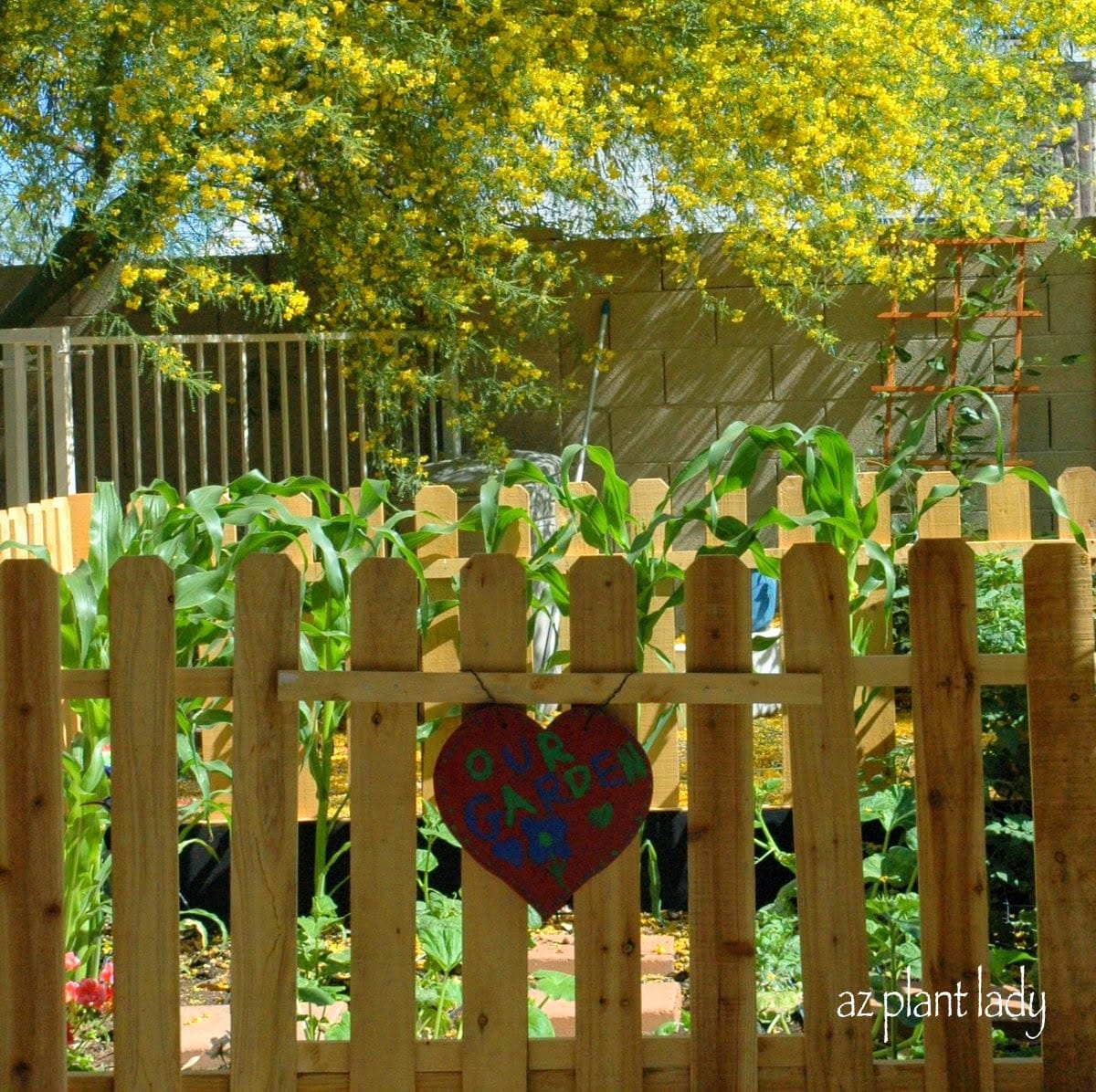
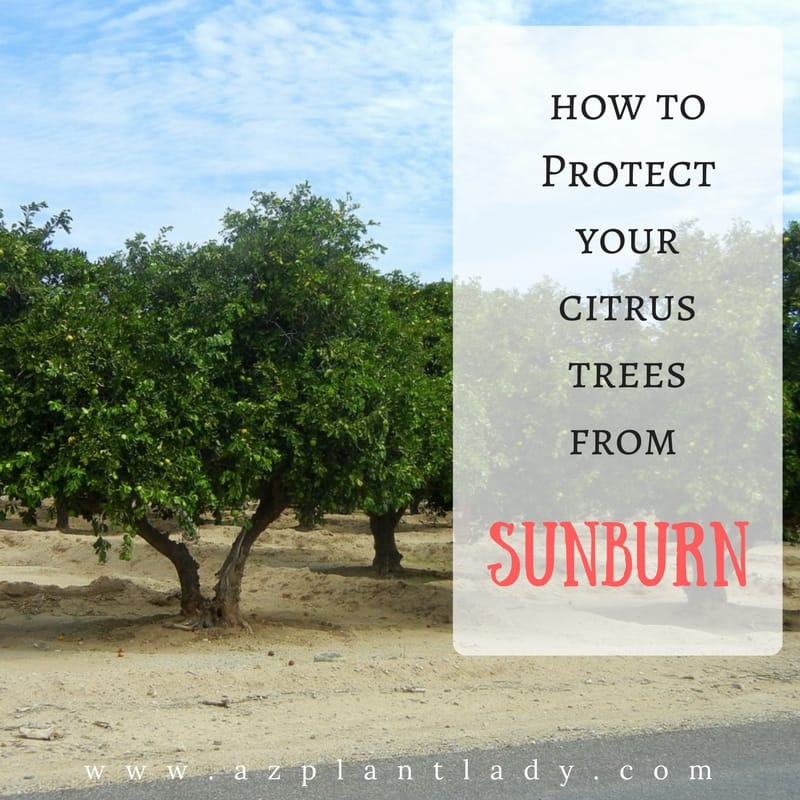









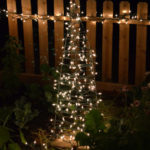
Sounds like the bad news turned out alright.
Is there something like this that affects birch trees?
Hi Barb,
Yes, sooty canker does affect some birch trees 🙁
Noelle
That's too bad about the trees, though I'm glad the homeowners seemed to be okay with designing something different anyway. I lost several large oak trees to what I think was a different kind of canker but looked rather similar. So sad!
I've always felt a lot better about losing plants from the garden after I heard (Rosemary Verey, I think) it said that there is no such thing as a garden disaster – just an opportunity to try something new.
That's quite a comfort!
Johnson
Noelle, I don't have the size of lemon tree you are showing in the posting today, but I must tell you that I did bring in my smaller tree and it is now in full bloom and beginning to produce lemons. Even here in zone 4 lemons are possible – if they never see or "feel" the cold of Winter. Nice to visit you again today. Jack